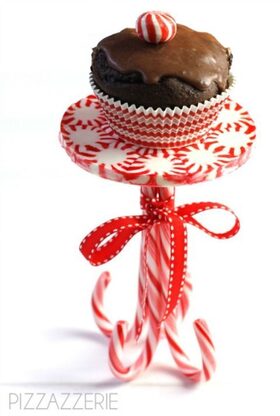
The History of the Candy Cane
Legend has it that in 1670, the cane shaped candy became historical when a choirmaster at the Cologne Cathedral in Germany bent the sugar-sticks into canes to appear as shepherd's hooks. The all-white candy canes were given out to children who attended the ceremonies. This became a popular tradition, and eventually the practice during church ceremonies which spread all over Europe and America.
The first documented example of the use of candy canes to celebrate Christmas occurred in 1847, when August Imgard, a German-Swedish immigrant, from Wooster, Ohio decorated the Christmas tree with paper ornaments and candy canes.
The solid white sugar canes were on Christmas cards in the early 1900's. The first red and white striped candy canes were made at the turn of the 19th century. At the same time the first striped candy canes appeared, and candy makers added the peppermint flavor which quickly became a traditional flavor.
In the 1920's Bob McCormack, from Atlanta, was the first to use candy canes as special treats for Christmas for his friends and family. In the beginning the red and white candy canes were made by hand and producing them were labor intensive. The laborious process of making candy canes was eliminated in the 1950's when a machine designed especially for the automation of candy cane productions was invented by Gregory Keller (Bob's brother-in-law). His company, Bob's Candies was the first company to mass-produce and distribute candy canes worldwide, and has been in business for over eighty years.
Many people believe that the shape and form of the candy cane have religious meaning. It is believed that the red stripes of the candy cane represent the blood of Christ and the white stripes of the candy cane represent the purity of Christ. The three fine stripes are believed to represent the Holy Trinity. The ''j'' shape of the candy cane is said to represent the name of Jesus. The solid texture or hardness of the candy cane is said to symbolize the solid rock foundation of the Church. The peppermint flavor is supposed to stem from an herb called hyssop. In the Old Testament hyssop was used to symbolize the purity of Jesus and the sacrifice he made. The crook shape is said to symbolize a shepherd's crook.
Either way, the candy cane is now a traditional symbol of the Christmas holiday. Today, candy canes are available in different shapes, colors and flavors, but the red and white peppermint candy cane still remains the classic favorite among candy canes.

Candy Cane Craft Ideas
To learn how to do any of these, click on the image and a new page will pop up.













